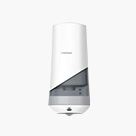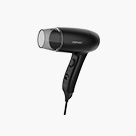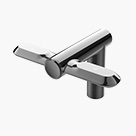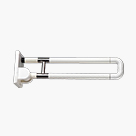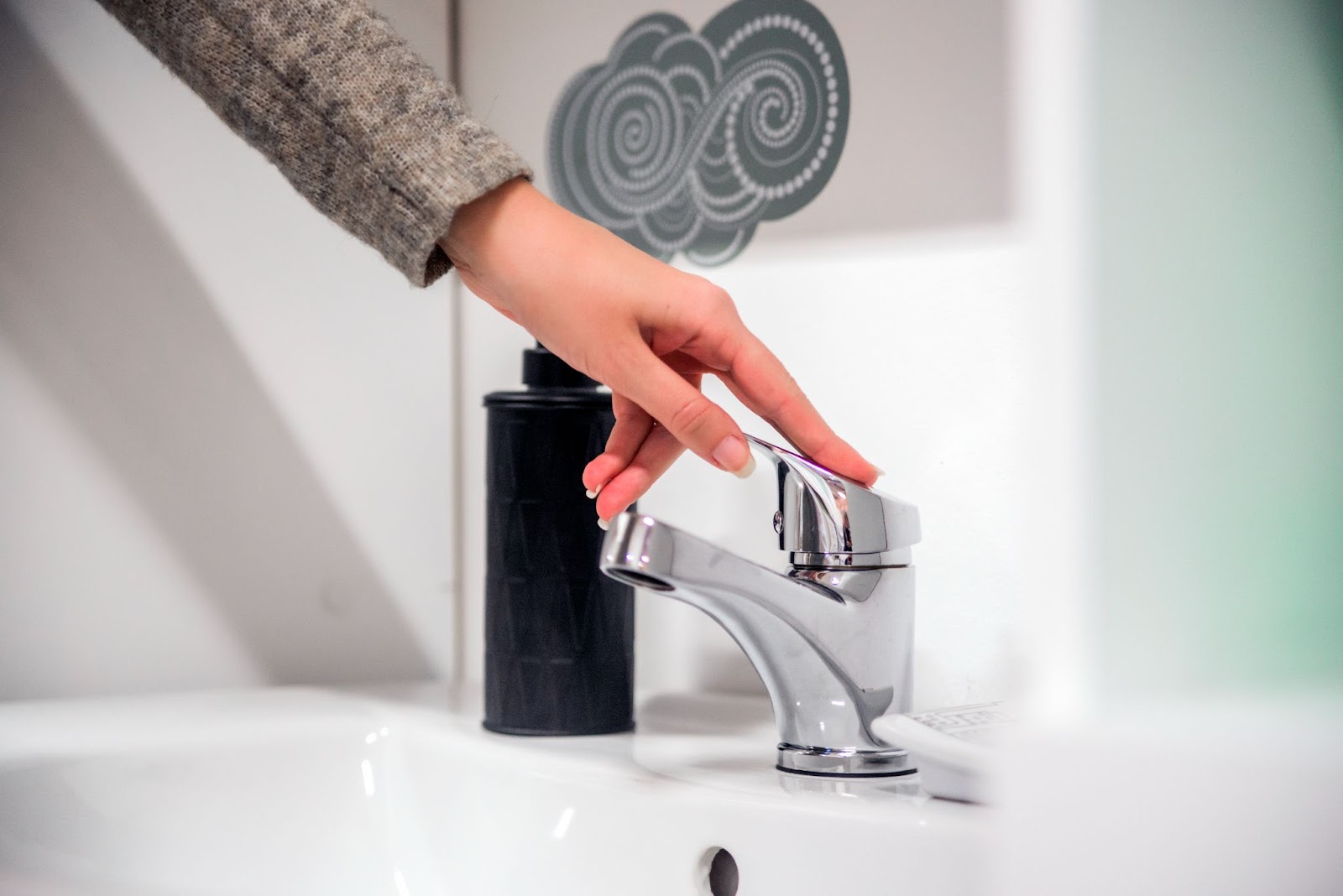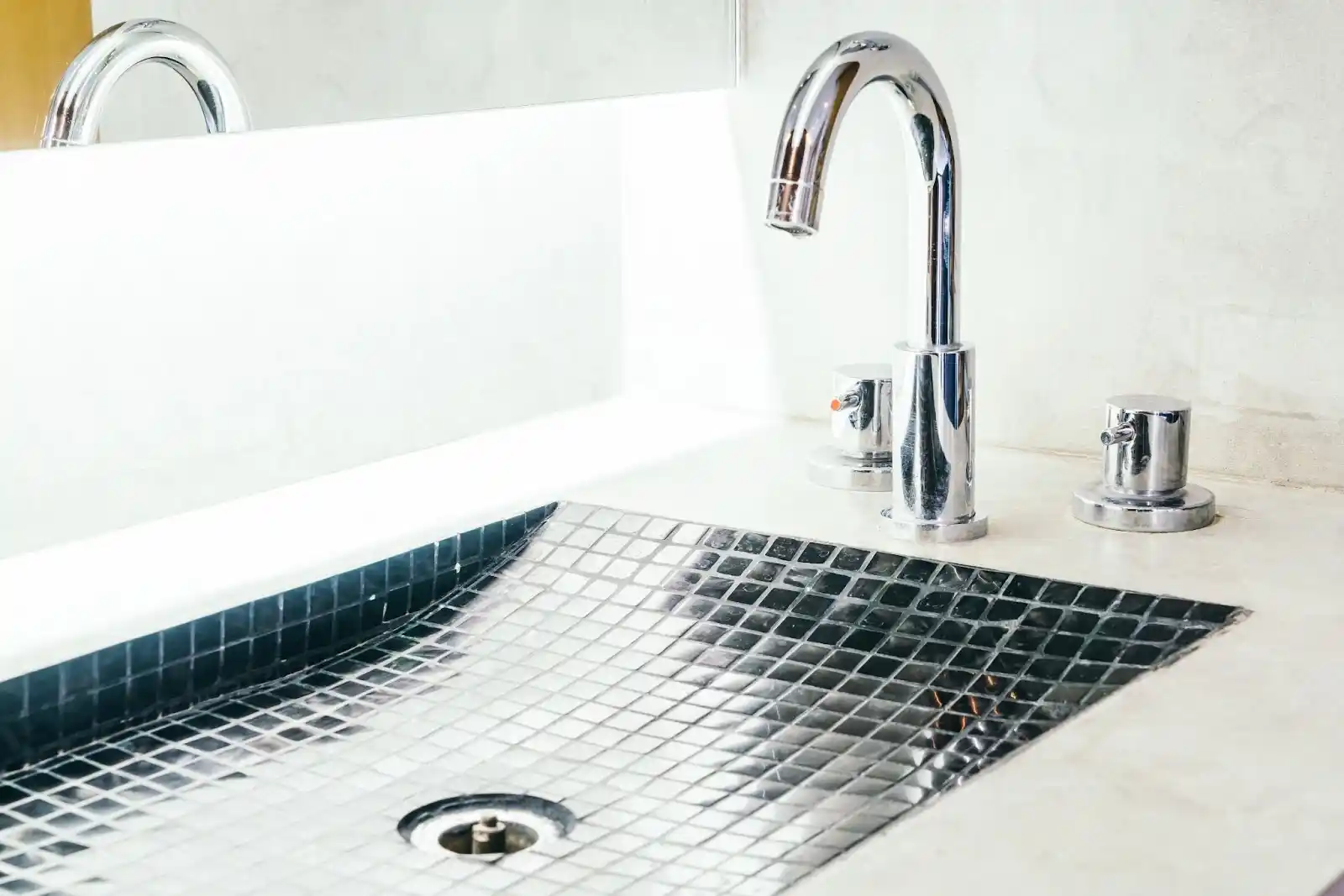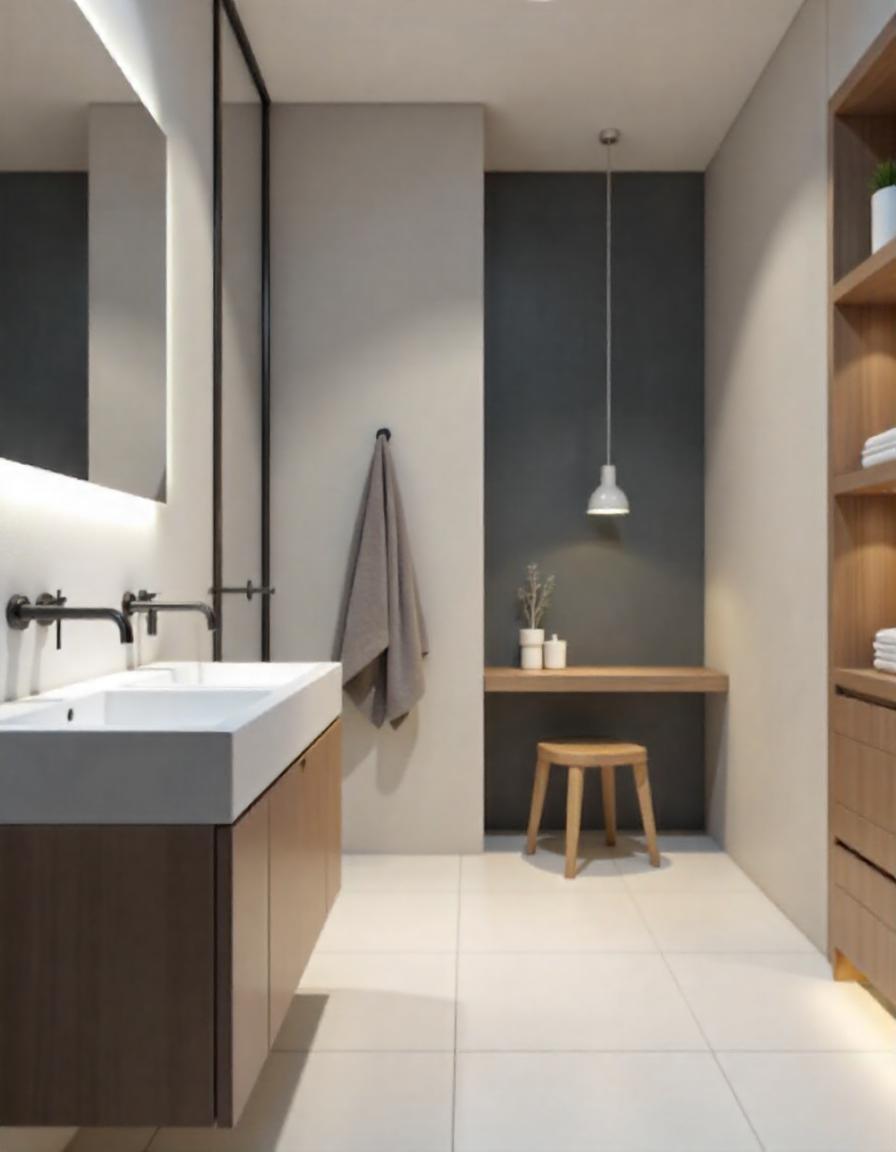
صنابير الاستشعار، أو صنابير بدون لمستستخدم تقنية استشعار الحركة لتنشيط تدفق المياه تلقائيًا. تُحسّن هذه الصنابير النظافة، وتقلل من هدر المياه، وتوفر راحة الاستخدام دون استخدام اليدين، مما يجعلها مثالية للمنازل والمساحات التجارية والمرافق العامة.
سوف تستكشف هذه المقالة كيفية صنابير الاستشعار العمل، والأنواع المتاحة، وفوائدها الرئيسية. سواءً كنت ترغب في تحديث حمامك أو تحسين كفاءة مطبخك، سيساعدك هذا الدليل على اتخاذ قرار واعٍ.
كيف تعمل صنابير الاستشعار؟
المبادئ الأساسية وراء صنابير الاستشعار
بخلاف الصنابير التقليدية التي تتطلب تشغيلًا يدويًا، تعمل صنابير الاستشعار باستخدام تقنية الأشعة تحت الحمراء أو كشف الحركة. إليك كيفية عملها:
- أجهزة استشعار القرب – تكتشف هذه المستشعرات الحركة أو الحرارة من اليدين، مما يؤدي إلى تدفق المياه دون ملامسة جسدية.
- صمام الملف اللولبي – عند تنشيطه بواسطة المستشعر، يتحكم هذا الصمام في تدفق المياه، مما يضمن الاستجابة السريعة والاستخدام الفعال.
- الإغلاق التلقائي - بمجرد إزالة اليدين، يتوقف الصنبور عن العمل تلقائيًا، مما يمنع هدر المياه.
- التحكم في درجة الحرارة – تتيح العديد من صنابير الاستشعار للمستخدمين ضبط درجة حرارة الماء مسبقًا، مما يلغي الحاجة إلى التعديل اليدوي.
أنواع صنابير الاستشعار
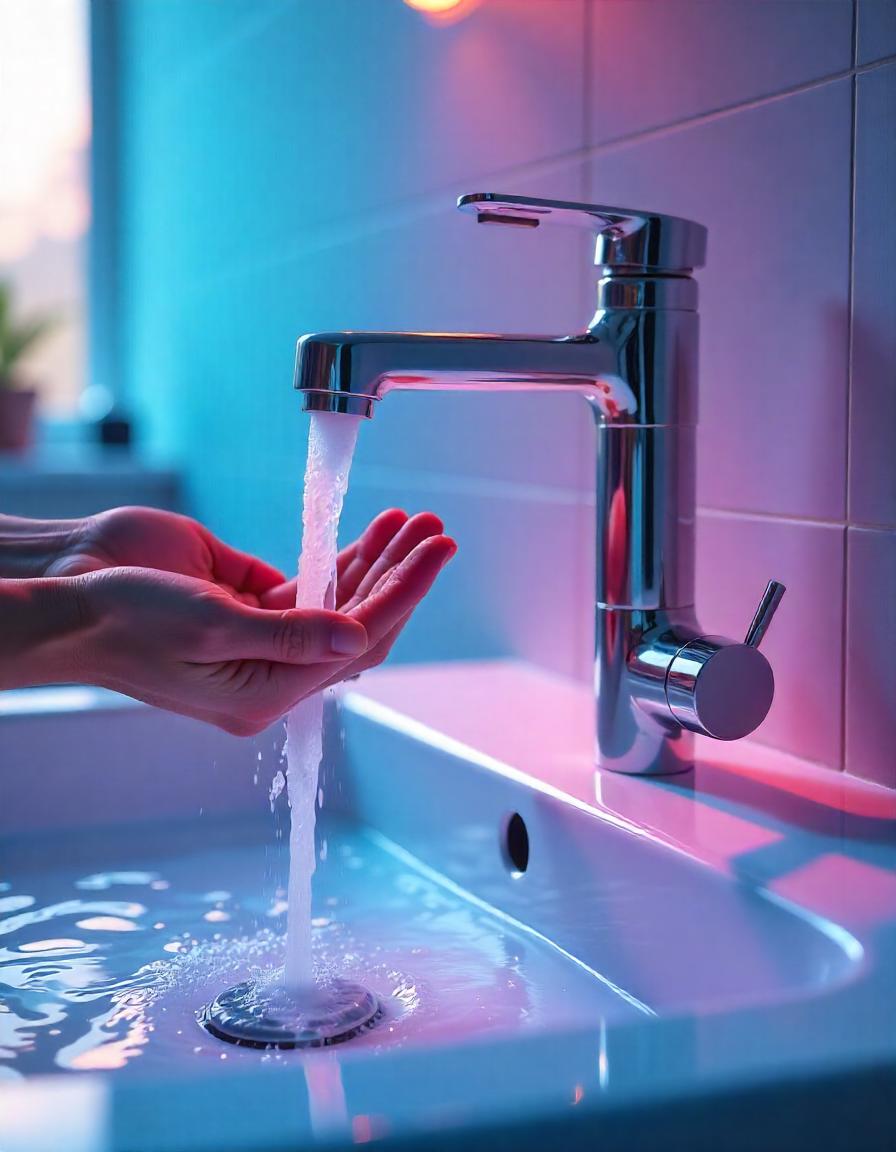
تتوفر صنابير الاستشعار بأنماط متنوعة، كل منها يناسب إعدادات مختلفة. لنستكشف الأنواع الأكثر شيوعًا:
1. صنابير الحمام المستشعرة
صُممت هذه الصنابير للحمامات السكنية والتجارية، وهي تُحسّن النظافة من خلال منع التلامس المباشر مع المقابض. تُستخدم عادةً في المستشفيات والمباني المكتبية ومراكز التسوق، وتُساعد على الحد من انتشار البكتيريا والفيروسات. مرحاض بدون لمس الخبرة، والعديد من المرافق تتضمن أيضًا مجففات الأيدي الحديثة، والتي تطورت بشكل كبير لتعزيز الكفاءة والصرف الصحي.
2. صنابير استشعار المطبخ
مثالية لمطابخ المنازل وأماكن تحضير الطعام، تمنع هذه الصنابير التلوث المتبادل من خلال توفير إمكانية الغسيل دون لمس. تأتي العديد من الموديلات مزودة بضغط ماء قابل للتعديل وتحكم في درجة الحرارة، مما يجعلها عملية للطهي والتنظيف والشطف.
3. صنابير الاستشعار التجارية
صُممت هذه الصنابير للمناطق ذات الكثافة المرورية العالية كالفنادق والمطارات والمطاعم، وتتميز بلمسات نهائية متينة من الفولاذ المقاوم للصدأ وكفاءة عالية في استهلاك المياه. بعض الموديلات مزودة بمستشعرات قابلة للبرمجة لضبط تدفق المياه بناءً على أنماط الاستخدام، مما يوفر على الشركات تكاليف فواتير المياه.
4. صنابير استشعار مثبتة على الحائط
هذه الصنابير تُوفر مساحة على سطح العمل، مما يجعلها مثالية للفنادق الفاخرة والمستشفيات والحمامات العصرية البسيطة. تصميمها الأنيق يُضفي لمسةً من الأناقة مع ضمان تشغيلها بدون استخدام اليدين.
5. صنابير استشعار مثبتة على السطح
تُركّب صنابير الاستشعار المثبتة على سطح الطاولة مباشرةً على أسطح العمل أو الأحواض، وتجمع بين الجمال العصري وسهولة التركيب. تُستخدم هذه الصنابير على نطاق واسع في المنازل والحمامات العامة، حيث تُتيح تدفقًا تلقائيًا للمياه وتنظيمًا لدرجة حرارتها. ولزيادة الراحة والنظافة، يُقرن العديد من المستخدمين هذه الصنابير بـ موزعات الصابون الأوتوماتيكية، والتي تأتي بتصميمات مختلفة لتناسب احتياجات مختلفة.
6. صنابير استشعار تعمل بالبطارية
تستخدم هذه الصنابير بطاريات قابلة للاستبدال أو الشحن، مما يجعلها سهلة التركيب في المناطق التي لا تتوفر فيها الكهرباء. تدوم عادةً من 6 إلى 12 شهرًا لكل شحنة، وهي مثالية للاستخدام السكني والتجاري على نطاق ضيق.
7. صنابير استشعار تعمل بالتيار المتردد
صُممت صنابير الاستشعار التي تعمل بالتيار المتردد للاستخدامات المكثفة، وتضمن التشغيل المستمر دون الحاجة إلى استبدال البطاريات. وهي مثالية للمطارات والمستشفيات والمباني المكتبية الكبيرة حيث تُعدّ الموثوقية أمرًا بالغ الأهمية. تتضمن العديد من الطُرز أوضاع توفير الطاقة لتحسين استهلاكها.
فوائد صنابير الاستشعار
لماذا عليك التفكير في استخدام صنبور استشعار؟ إليك أهم مزاياه:
- تحسين النظافة – يقلل من انتشار الجراثيم عن طريق القضاء على الحاجة إلى لمس الصنبور.
- الحفاظ على المياه يمنع الإغلاق التلقائي هدر المياه، مما يوفر ما يصل إلى 70% من المياه مقارنة بالحنفيات اليدوية.
- راحة - يعد التشغيل بدون استخدام اليدين مثاليًا للقيام بمهام متعددة، وخاصة في المطبخ.
- المتانة والصيانة المنخفضة مُصمم للاستخدام طويل الأمد مع عدد أقل من الأعطال الميكانيكية.
- تصميم عصري وأنيق يعزز جماليات أي مساحة بتقنية أنيقة بدون لمس.
الأسئلة الشائعة حول صنابير الاستشعار
- هل من الصعب تركيب صنابير الاستشعار؟
لا. معظم صنابير الاستشعار التي تعمل بالبطارية سهلة التركيب باستخدام أدوات بسيطة. قد تتطلب الموديلات التي تعمل بالتيار المتردد تركيب أسلاك احترافي.
- هل تعمل صنابير الاستشعار مع جميع الأحواض؟
نعم، ولكن تحقق من أبعاد الصنبور للتأكد من التوافق مع نوع الحوض (سطح الطاولة، أو الحائط، أو السطح).
- كيف يتم تشغيل صنابير الاستشعار؟
يتم تشغيلها إما بواسطة بطارية (AA/AAA أو ليثيوم) أو مصدر طاقة تيار متردد، اعتمادًا على الطراز.
- هل يمكنني تعديل درجة حرارة الماء؟
نعم، تتضمن العديد من النماذج إعدادات التحكم في درجة الحرارة حسب تفضيلات المستخدم.
- كيف أقوم بصيانة صنبور الاستشعار؟
نظّف المستشعر بانتظام لإزالة الأوساخ والحطام. استبدل البطاريات عند الحاجة لضمان استمرارية العمل. بعض الطرازات مزودة بفلاتر ذاتية التنظيف لمنع الانسداد.
الأفكار النهائية
صنابير الاستشعار ليست مجرد ترف، بل هي ضرورية في عالمنا اليوم الذي يولي اهتمامًا بالغًا بالنظافة. سواءً للاستخدام المنزلي أو التجاري، تُحسّن هذه التركيبات الذكية النظافة، وتوفر المياه، وتوفر راحة لا مثيل لها.
إذا كنت تبحث عن صنابير استشعار عالية الجودة ومتينة وأنيقة، فاستكشف مجموعتنا على انترهسا- المزود الموثوق به لحلول النظافة المبتكرة.
الموارد والمراجع
- تقرير وكالة حماية البيئة بشأن الحفاظ على المياه https://www.epa.gov/watersense
- إرشادات نظافة اليدين من مراكز السيطرة على الأمراض والوقاية منها https://www.cdc.gov/handhygiene







